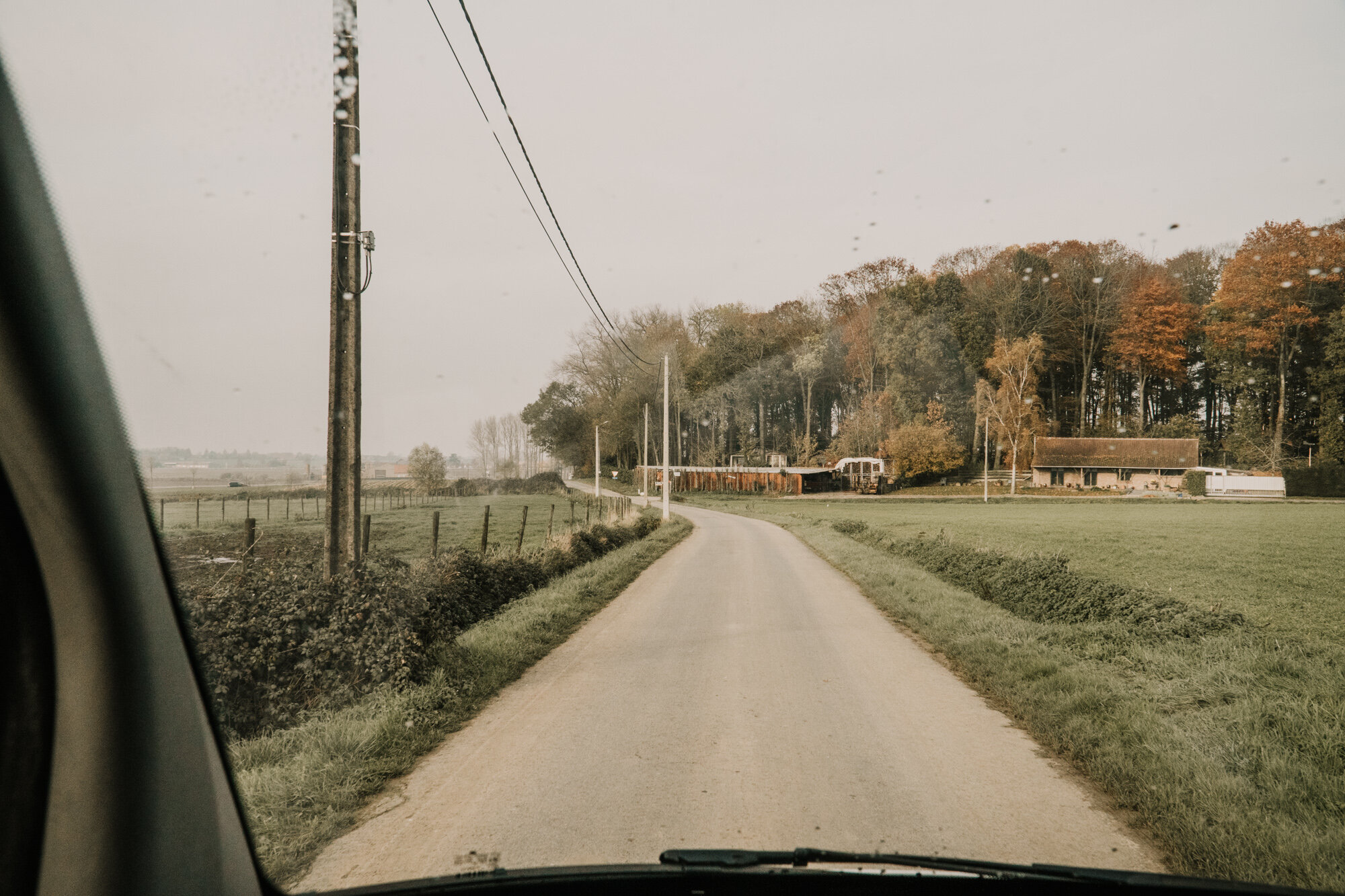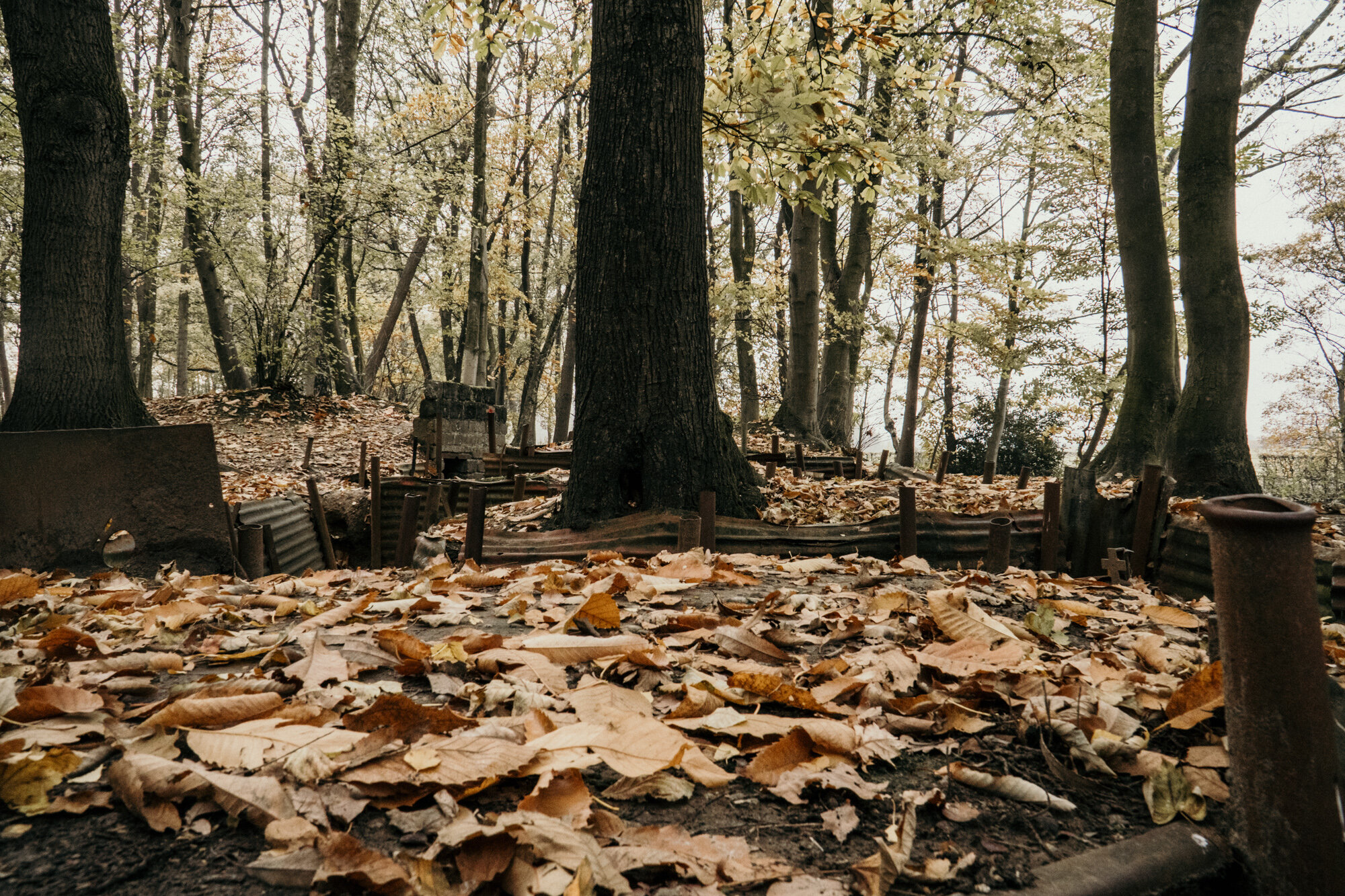In Flanders Fields
After a sobering morning wandering around Ypres, we strolled along the old city ramparts on our way back to the van. Ypres is surrounded by Flanders Fields, an area of countryside that was the frontline of WWI. Trenches were dug for miles into this innocent looking landscapes and it was here that The Allies pushed back against the German advance. War cemeteries and memorials are plentiful here, and we drove out to see two of the most famous: Hill 62 and Tyne Cot Cemetery.
Hill 62: Sanctuary Wood
The first sight was an open air museum called Hill 62: Sanctuary Wood. It’s not much in the way of a museum, but out the back you come face to face with a preserved WWI trench, zig zagging it’s way through the trees. Supported by corrugated iron, it’s almost exactly as it would have looked 100 years ago. Even the farm fields beyond the woods look the same, except today they are green, and not covered in barbed wire and lakes of mud. The little copse of trees is peaceful and incredibly beautiful. It’s difficult to imagine such tragedy happening here. The carpet of orange leaves is pock marked by shell craters and the trench is like a scar through the trees. Upon leaving the wood, they have on display discarded shells, spent bullets and spools of the original barbed wire. It’s a surreal and humbling experience.
Tyne Cot Cemetery
Our final stop was a fitting one. We drove about 5 miles to reach Tyne Cot Cemetery, the largest commonwealth war memorial in the world. It lies in the middle of the countryside, surrounded by farms and cattle. It holds the graves of 12,000 men. You can walk through the rows and rows of white tombstones. Around half of them are unknown soldiers. In the late afternoon sun, the memorial was a peaceful and beautiful place to be. It really put into perspective everything we’d learned that day. In the setting sun, we made our way back to the camp. It had been an incredible day, one that neither of us would forget any time soon. But it wasn’t over yet.
Every evening at 8pm, city buglers in Ypres play The Last Post at the Menin Gate. We walked down after dinner expecting a small crowd. How wrong we were! Traffic was stopped, barriers were erected, and tour buses lined the road leading up to it. As the clock struck 8, the crowd hushed and the buglers played. Hearing the music echo within the arches of the Menin Gate, surrounded by the names of young soldiers who had given their lives, was a deeply moving and saddening experience. An elderly war veteran came to stand near the buglers, reciting the poem:
They shall grow not old, as we that are left grow old:
Age shall not weary them, nor the years condemn.
At the going down of the sun and in the morning
We will remember them.
Soldiers and young children then went to lay their poppy wreaths as The Last Post played one more time. I can’t describe how powerful the atmosphere was. It was a privilege to stand there and remember.
Buglers playing The Last Post












